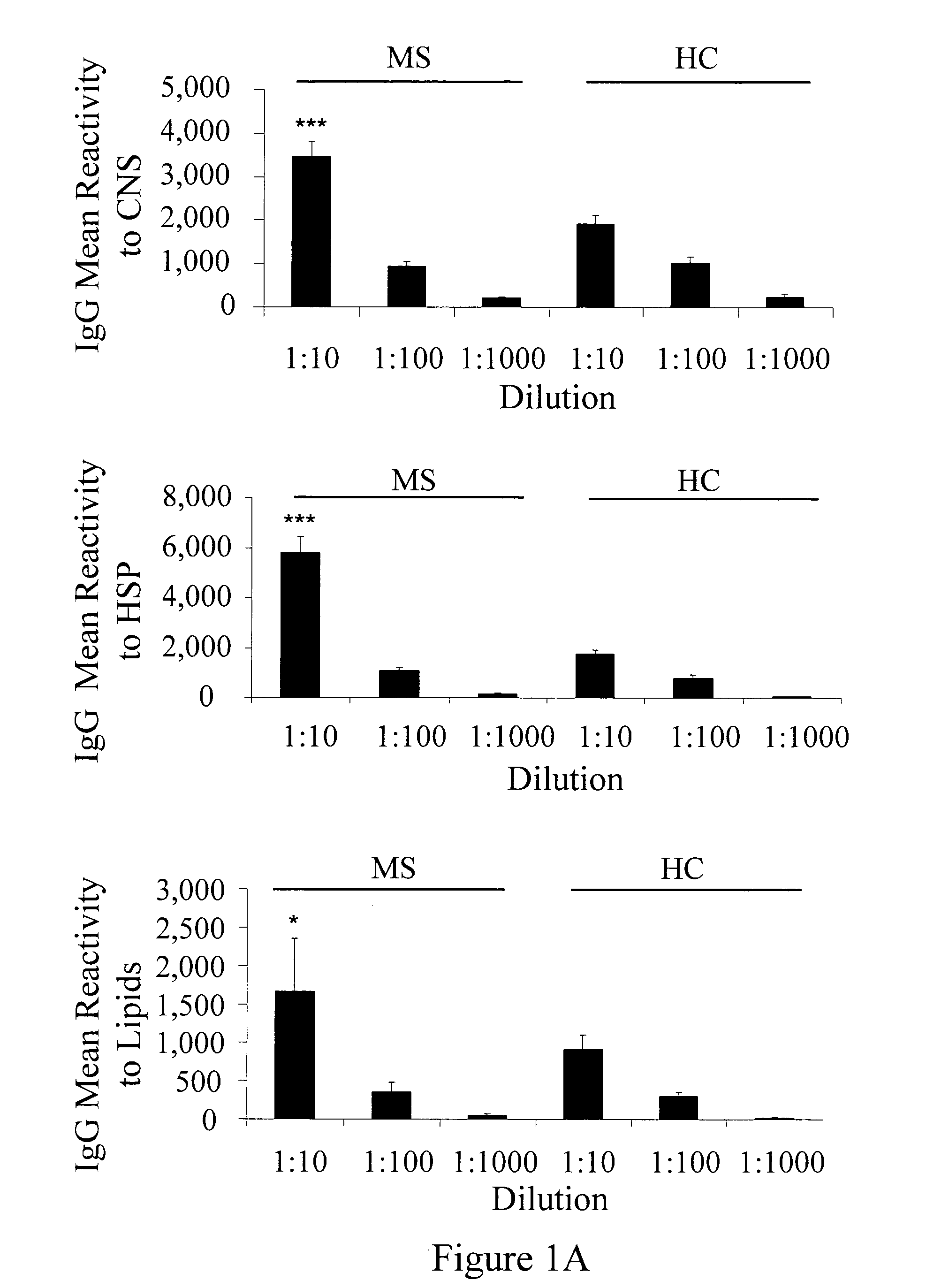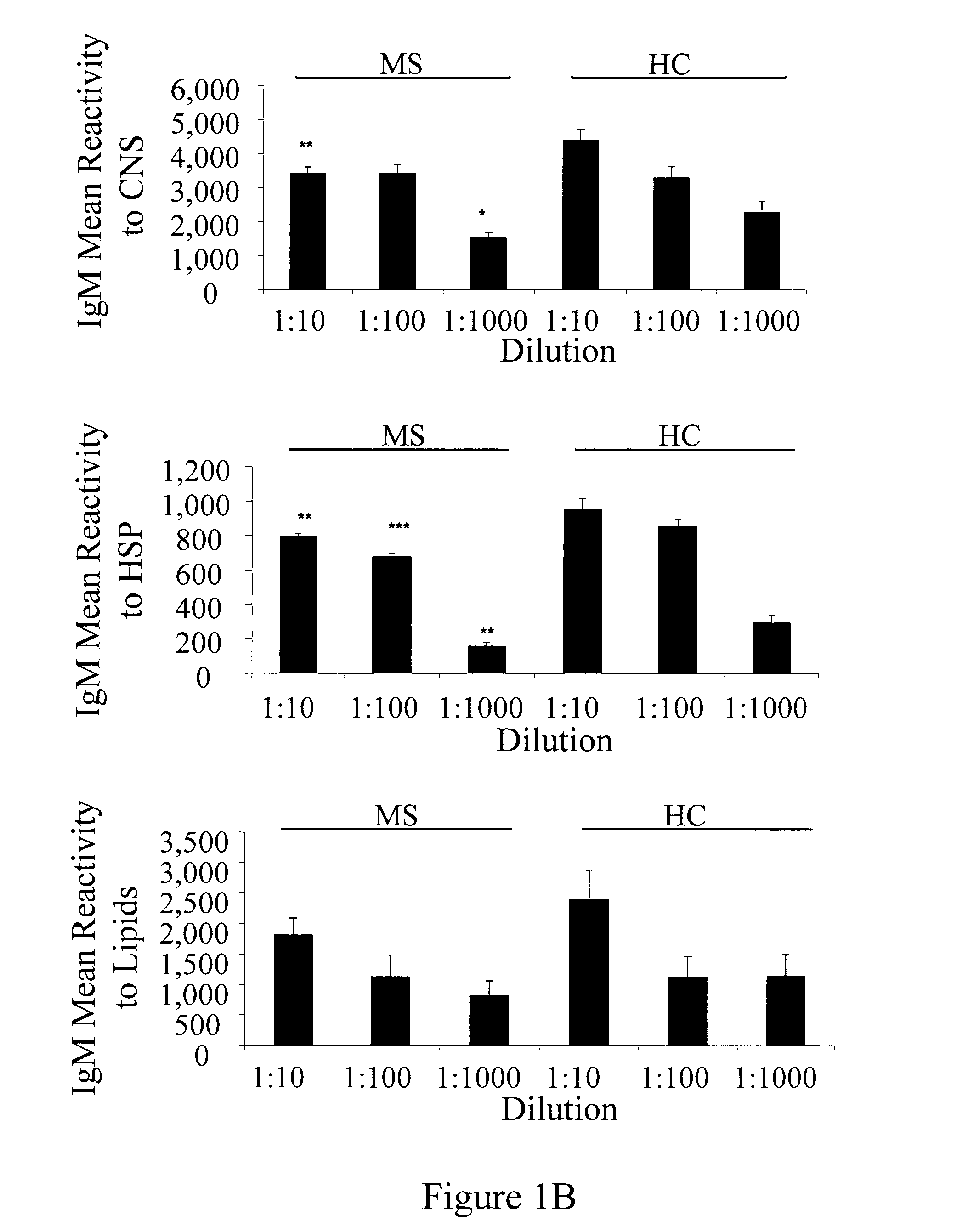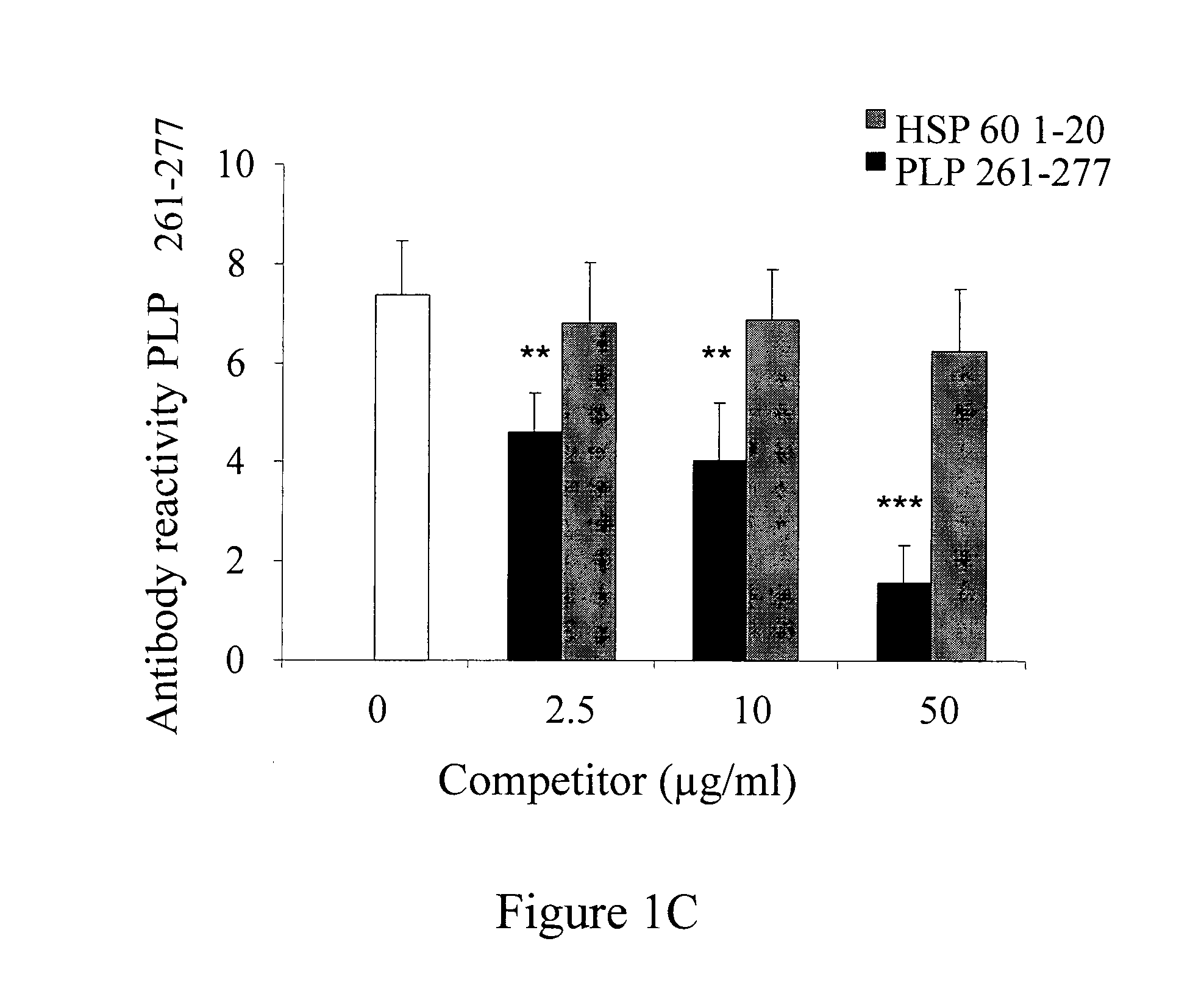Diagnosis of multiple sclerosis
a multiple sclerosis and diagnostic kit technology, applied in the field of multiple sclerosis diagnostic kits, can solve the problems of complex diagnostic classification scheme and mri criteria, unpredictability of multiple sclerosis progress and regress, and limited use of mri to study ms lesions
- Summary
- Abstract
- Description
- Claims
- Application Information
AI Technical Summary
Benefits of technology
Problems solved by technology
Method used
Image
Examples
example 1
Conditions to Detect Specific Microarray Autoantibodies in MS
[0205]Antigen microarrays were constructed using 362 myelin and inflammation-related antigens (listed herein above) that encompassed CNS antigens suspected of being associated with MS, CNS antigens suspected of being associated with other neurological diseases and heat shock proteins (HSP). Antigens were spotted on epoxy glass slides using a robotic arrayer as previously described (Quintana et al., 2004).
[0206]The sensitivity of the antigen-microarray technique was compared to that of a standard ELISA technique using commercially available monoclonal and polyclonal antibodies directed against CNS, HSP and lipid antigens. The antigen microarray detected antigen reactivities at log10 dilutions that were 1-2 logs greater than the reactivities detected by using the ELISA method (Table 7). Thus, the antigen microarray appears to be more sensitive than a standard ELISA assay.
[0207]
TABLE 7Comparison of antigen microarray with ELI...
example 2
Autoantibody Pattern Analysis Identifies an Immune Signature for RRMS
[0210]To investigate if unique antibody signatures in RRMS could be identified, the antibody repertoire in 38 patients with RRMS and 30 healthy controls (HC) subjects was studied. Samples were allocated into a training set (24 RRMS and 20 controls) and a randomly selected test set (14 RRMS and 10 controls). The training set was used to determine whether patterns of antibody reactivity that could discriminate RRMS from control samples may be identified. If such patterns were found, they were then validated on the test set. The training set was analyzed using the Wilcoxon-Mann-Whitney test; the false discovery rate was controlled using the method of Benjamini and Hochberg (Cohen, I. R., 2007, Nat Rev Immunol. 7, 569-74). The clinical characteristics of the patients and HC are listed in Table 6.
[0211]As shown in the heatmap in FIG. 2A, a pattern of reactivity that distinguished RRMS from HC (P<0.0001, Fisher's exact t...
example 3
Autoantibody Pattern Analysis Identifies an Immune Signature for PPMS
[0216]PPMS has a different clinical course than RRMS, and it has been suggested that PPMS may involve disease mechanisms different from those in RRMS (Miller & Leary, 2007, Lancet Neurol. 6, 903-12). 24 PPMS and 25 age- and gender-matched HC in a training set, and 13 PPMS and 12 controls in a test set of samples were studied.
[0217]The antibody reactivities included in the heatmap shown in FIG. 2B are listed herein (in the same order as in the heatmap, i.e. from top to bottom): IgM_PLP 215-232; IgG_PLP 215-232; IgM_mMBP; IgG_HSP70 195-214; IgM_smLPS; IgM_HSP70 210-229; IgM_Chondroitin 4-Sulfate; IgG_HSP70 166-185; IgG_bovineMBP; IgM_bovineMBP; IgG_PLP 137-150; IgG_MOG 46-65; IgG_CNP 406-421; IgG_P2 31-50; IgG_CNP 1-20; IgG_MOG 16-35; IgG_P2 76-95; IgM_Neurofilament 68 kDa; IgM_Beta Amyloid; IgG_HSP70 466-485; IgM_AB 1-40; IgM_PLP 161-180; IgM_PLP 40-59; IgM_PLP 137-150; IgG_HSP60 76-95; IgG_MOG 151-170; IgG_P2 1-20;...
PUM
| Property | Measurement | Unit |
|---|---|---|
| concentration | aaaaa | aaaaa |
| diameter | aaaaa | aaaaa |
| reactivity | aaaaa | aaaaa |
Abstract
Description
Claims
Application Information
 Login to View More
Login to View More - R&D
- Intellectual Property
- Life Sciences
- Materials
- Tech Scout
- Unparalleled Data Quality
- Higher Quality Content
- 60% Fewer Hallucinations
Browse by: Latest US Patents, China's latest patents, Technical Efficacy Thesaurus, Application Domain, Technology Topic, Popular Technical Reports.
© 2025 PatSnap. All rights reserved.Legal|Privacy policy|Modern Slavery Act Transparency Statement|Sitemap|About US| Contact US: help@patsnap.com



